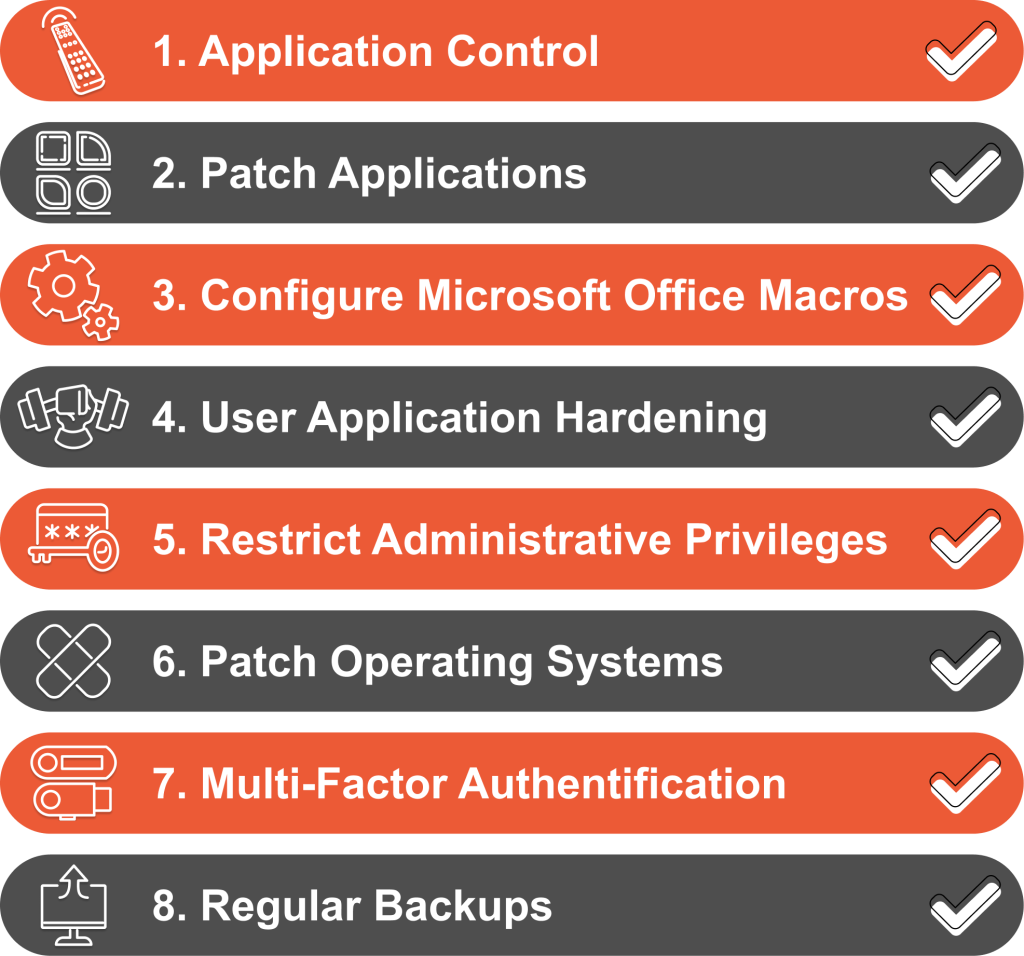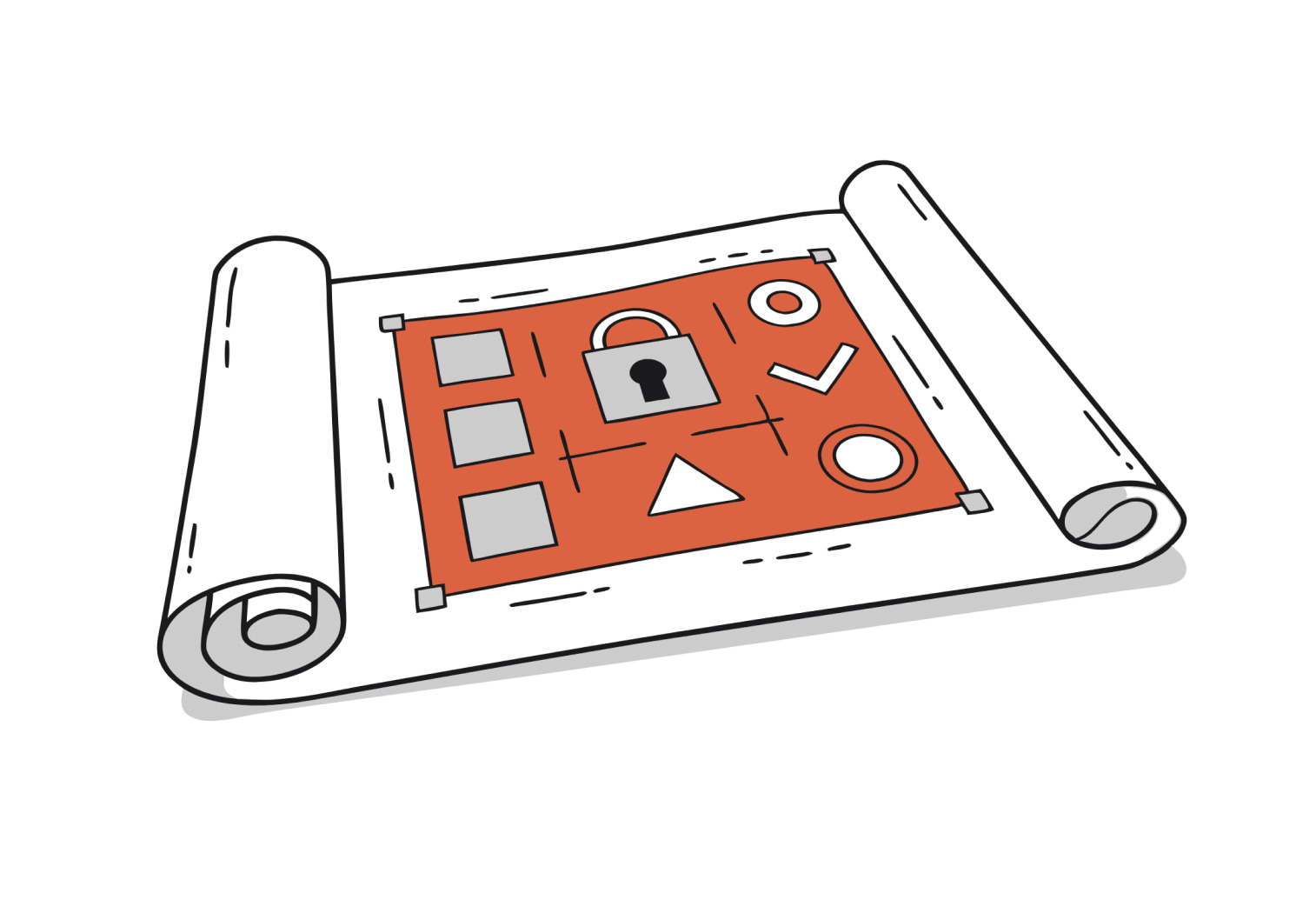In this article
In an era where cyber threats are increasingly sophisticated and pervasive, threatening business processes and reputations, having an understanding of up-to-date cyber security standards is not just a technical necessity but a fundamental business responsibility.
But where to start? In an increasingly diverse and complex field the Australian Government brings local businesses a vital framework for compliance with essential cyber security standards, developed by the Australian Signals Directorate (ASD) – the Essential 8 Maturity Model.
The framework is not merely a set of guidelines, it’s a robust approach to cyber security, offering a layered defence mechanism that is crucial for safeguarding your information assets. In a proactive and pragmatic approach to digital security that is consistently updated, addressing the ever-evolving nature of cyber risks (see ASD 2023 annual cyber threat report) in a structured and effective manner.
We cannot understate the importance of staying up-to-date with the ASD’s most recent guidelines to keep your business protected, so let’s delve into an in-depth exploration of the Essential 8 Maturity Model and understand its critical role as a guideline to enhancing and maintaining your organisation’s cyber security posture.
Understanding the ASD Essential 8
The ASD Essential 8 comprises a set of eight mitigation strategies that serve as the cornerstone of effective cyber defence. Understanding these strategies is fundamental for any organisation looking to bolster its cyber security framework.
Application Control
Application control is a critical security measure that involves the regulation of executable software within an organisation’s network. This strategy ensures that only authorised and verified applications are allowed to operate, effectively mitigating the risk of malicious software infiltrations. It is achieved through the implementation of whitelisting or blacklisting techniques for software libraries and the rigorous evaluation of application integrity.
Patching Applications
The process of regularly updating and patching applications is essential for maintaining a strong cyber security posture. This involves regularly reviewing, identifying and rectifying software vulnerabilities that could be exploited by cyber attackers. Effective patch management includes timely deployment of vendor-released patches and continuous monitoring for potential software vulnerabilities.
Microsoft Office Macros
Given their potential for misuse, Microsoft Office Macros must be managed with caution. The only mitigation strategy here involves restricting macro usage to essential and trusted instances only, thus minimising the risk of macro-enabled malware. Implementing strict policy controls and user education on the safe use of macros are key.
User Application Hardening
User application hardening aims to reduce the attack surface of software applications. This involves configuring settings within web browsers and other applications to disable unnecessary features that could be leveraged by attackers. Techniques include disabling unneeded plugins, scripting functionalities, and using security-focused browser settings.
Restricting Administrative Privileges
This strategy entails limiting the number of users with administrative privileges within an organisation. By reducing the pool of privileged users with high-level access rights, the potential for exploitation is diminished. This involves rigorous access control management, regular reviews of user privileges and the application of the principle of least privilege.
Patching Operating Systems
A structured approach to updating and securing operating systems by addressing identified vulnerabilities. A comprehensive patch management protocol is key, ensuring that security controls the timely and effective deployment of security patches. Continuous vigilance in monitoring for new vulnerabilities and updates is also crucial, as it helps maintain the integrity and security of the operating system against emerging threats.
Multi-Factor Authentication (MFA)
Multi-Factor Authentication enhances security by requiring multiple forms of verification when accessing systems. This method significantly reduces the likelihood of unauthorised access, as it combines something the user knows (like a password) with something the user has (such as a mobile device) or something the user is (like a fingerprint).
Regular Backups
Consistently backing up data is a crucial strategy for ensuring information resilience. In the event of a cyber incident, having up-to-date backups allows for the rapid restoration of lost or compromised data. A comprehensive backup strategy should include regular backup scheduling, secure storage of backup data and routine testing of backup integrity.
Each of these strategies plays a vital role in a comprehensive cyber security plan. They are not just individual actions but interconnected parts of a holistic approach to digital security. Implementing the Essential 8 is not just about ticking boxes; it’s about creating a culture of security within your organisation, where every layer of defence works in symphony.
Exploring the Maturity Model
The ASD Essential 8 Maturity Model categorises an organisation’s cyber security posture into four distinct levels. Understanding and defining the key requirements of each level is crucial for organisations to assess and enhance their cyber security maturity.
Maturity Level Zero
At this level, organisations have significant gaps in their cyber security defences.
Key requirements:
- Limited or no implementation of the Essential 8 strategies.
- Lack of regular reviews or updates to cyber security practices.
- Minimal awareness or training among staff regarding cyber security.
This level indicates a need for immediate action to establish basic cyber security measures.
Maturity Level One:
Represents the establishment of basic cyber security practices.
Key requirements:
- Partial implementation of the Essential 8 strategies.
- Basic cyber security policies and procedures are in place.
- Some level of staff training and awareness on cyber security issues.
This level reflects an awareness of cyber security importance but requires further development and implementation of mitigation strategies.
Maturity Level Two:
Indicates a more advanced and proactive cyber security stance.
Key requirements:
- Implementation of most, if not all, of the Essential 8 strategies.
- Regular review and updates of cyber security measures.
- Enhanced staff training and robust incident response plans.
- Integration of cyber security into the organisational culture and regular operations.
Organisations at this level are actively managing and updating their cyber security defences.
Maturity Level Three:
Represents the highest level of cyber security maturity.
Key requirements:
- Comprehensive and fully implemented Essential 8 strategies.
- Continuous monitoring and proactive threat assessment.
- Advanced staff training, including simulation exercises and continuous learning.
- Strong governance, including board-level engagement and regular reporting on cyber security posture.
- Ability to quickly adapt and respond to emerging threats and technologies.
This level signifies a business that not only protects against current threats but is also prepared to adapt and respond to future challenges.
Each level in the Maturity Model builds upon the previous one, moving an organisation from a reactive posture to a proactive and advanced cyber security stance. The goal for any organisation should be to strive towards Maturity Level Three, where cyber security is not just a set of practices but an integral part of the organisational culture and mindset.
Overview of Recent Changes to the Essential 8
The Australian Signals Directorate (ASD) updated the Essential Eight Maturity Model in November 2023. These changes reflect evolving cyber security threats and aim to strengthen organisational defences.
Patch Applications and Operating Systems:
Prioritised Patching: Critical vulnerabilities (e.g., facilitating privileged access or remote code execution) must be patched within 48 hours.
Application Patching Timeframes: Applications interacting with untrusted internet content now require patching within two weeks, with weekly vulnerability scanning.
Balancing Patching for Operating Systems: Less critical devices (e.g., non-internet-facing servers) have extended patching timelines from two weeks to one month.
Drivers and Firmware: Maturity Level Three now includes patching for drivers and firmware vulnerabilities.
Multi-factor Authentication (MFA):
Revised MFA Standards: Maturity Level One specifies MFA to include ‘something users have’ and ‘something users know’.
Phishing-Resistant MFA: Enhanced focus on phishing-resistant MFA options, especially for online services storing sensitive data.
MFA for Workstations: Requirement added for phishing-resistant MFA for workstation access at Maturity Levels Two and Three.
Restrict Administrative Privileges:
Governance Processes: Enhanced processes for granting, controlling, and rescinding privileged account access.
Internet Access for Privileged Accounts: Controlled and limited internet access for such accounts.
Hardening Administrative Infrastructure: Maturity Level Three includes the use of Secure Admin Workstations and Windows security functionalities.
Application Control
Annual Review of Control Rulesets: Emphasis on yearly evaluations and implementation of Microsoft’s recommended application blocklists at Maturity Level Two.
Restrict Microsoft Office Macros:
Removal of Macro Execution Event Logging: Due to limited benefits and implementation challenges.
Enforcing Secure Macro Signatures: Requirement for V3 digital signatures at Maturity Level Three.
User Application Hardening
Disabling Unsupported Software: Specifically, disabling or uninstalling Internet Explorer 11.
PowerShell Logging: Focus on native PowerShell logging, including command line process creation events.
Regular Backups:
Prioritising Backups: Encouraged to consider business criticality when prioritising backups.
Steps for Assessing Your Current Cyber Security Posture Against the Model
To effectively align with the ASD Essential 8 Maturity Model, businesses must undertake a thorough assessment of their current cyber security posture and implement necessary changes in a structured manner. Below is a top-level guide on how to approach the process:
Initial Cyber Security Assessment:
Understand the Essential 8 Framework: Gain a comprehensive understanding of the ASD Essential 8 strategies and maturity levels.
Current State Analysis: Evaluate your current cyber security practices against each of the Essential 8 strategies. This involves identifying what measures are in place and how they align with the model’s requirements.
Vulnerability and Gap Identification: Pinpoint areas where your cyber security measures fall short of the model’s standards. This includes identifying vulnerabilities in your systems, processes, and policies.
Risk Assessment:
Assess Cyber Security Risks: Understand the potential impact of identified vulnerabilities and gaps. Determine the likelihood of these risks materialising and their potential impact on your organisation.
Prioritise Risks: Based on the assessment, prioritise risks that need immediate attention.
Benchmarking Against the Model:
Maturity Level Determination: Ascertain your business’s current target maturity level for each of the Essential 8 strategies. This will help in understanding the distance to the desired maturity level.
Beyond the Basics: Elevate Your Cyber Security Posture
Embracing the ASD Essential 8 Maturity Model is a game-changer for any business owner in today’s cyber threat landscape. It’s more than just a compliance checklist; it’s a robust framework designed to fortify and de-risk your business against cyber threats. Each of the eight strategies, from application control to regular backups, acts as a critical layer of defence, protecting your business’s sensitive data and reputation.
As you progress through the maturity levels, from zero to three, you’re not just enhancing your cyber security, you’re building a culture of digital resilience for your business. It’s important to remember that cyber security is an evolving landscape; it’s a marathon not a sprint. Regularly updating your strategies to counter new threats is crucial. By making this commitment to cyber security, you’re not only safeguarding your business assets but also reinforcing customer trust and your business’s credibility.
Achieving compliance with the Essential 8 is a clear statement that you value and prioritise the security and longevity of your business in the modern business environment.
Looking to bring your cyber maturity level up to standard? Speak to the TechBrain team.








